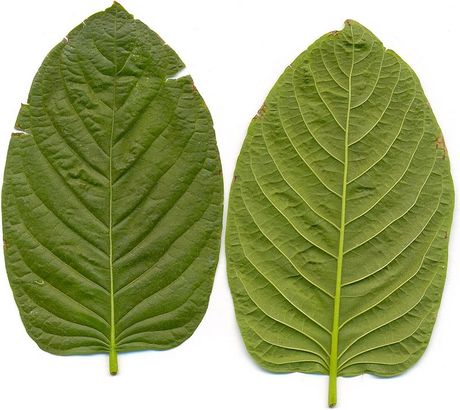KratomCafe
KratomCafe
Mitragyna speciosa (commonly known as kratom) is a tropical evergreen tree in the coffee family native to Southeast Asia. It is indigenous to Thailand, Indonesia, Malaysia, Myanmar, and Papua New Guinea, where it has been used in traditional medicines since at least the nineteenth century.[4] Kratom has opioid properties and some stimulant-like effects.
Possession of kratom leaves was illegal in Thailand until 2018. The Thai government had passed the Kratom Act 2486, effective August 3, 1943, which made planting the tree illegal, in response to a rise in its use when opium became very expensive in Thailand and the Thai government was attempting to gain control of the opium market. In 1979, the Thai government placed kratom, along with marijuana, in Category V of a five category classification of narcotics. Kratom accounted for less than 2% of arrests for narcotics between 1987 and 1992.
The government considered legalizing kratom in 2004, 2009, and 2013. In 2018, Thailand became the first Southeast Asian country to legalize kratom for medical purposes.
Mitragyna speciosa is an evergreen tree that can grow to a height of 25 m (82 ft). Its trunk may grow to a 0.9 m (3 ft) diameter. The trunk is generally straight, and the outer bark is smooth and grey. The leaves are dark green and glossy[8] and can grow to over 14–20 cm (5.5–7.9 in) long and 7–12 cm (2.8–4.7 in) wide when fully open, are ovate-acuminate in shape, and opposite in growth pattern, with 12–17 pairs of veins. The flowers grow in clusters of three at the ends of the branches. The calyx-tube is 2 mm (0.08 in) long and has five lobes; the corolla-tube is 2.5–3 millimetres (0.098–0.12 in) long.
Mitragyna speciosa is indigenous to Thailand, Indonesia, Malaysia, Myanmar, and Papua New Guinea.] It was first formally described by the Dutch colonial botanist Pieter Korthals in 1839, who named it Stephegyne speciosa; it was renamed and reclassified several times before George Darby Haviland provided the final name and classification in 1859.
In cultures where the plant grows, kratom has been used in traditional medicine. The leaves are chewed to relieve musculoskeletal pain and increase energy, appetite, and sexual desire in ways similar to khat and coca.[8] The leaves or extracts from them are used to heal wounds and as a local anesthetic. Extracts and leaves have been used to treat coughs, diarrhea, and intestinal infections.[4][3][19] They are also used as intestinal deworming agents in Thailand.[17] Kratom is often used by workers in laborious or monotonous professions to stave off exhaustion as well as a mood enhancer and painkiller.[19] In Thailand, kratom was "used as a snack to receive guests and was part of the ritual worship of ancestors and gods".[24] The herb is bitter and is generally combined with a sweetener.
Public Health Ministry, Justice Ministry to remove cannabis, kratom from drugs list 28 Dec 2019
The Drugs Act of B.E. 2562 which was published in the Royal Gazette last February keeps cannabis and kratom off the drugs list, to allow them to be trialed for medical use. The Ministry of Public Health and the Ministry of Justice now plan to remove both types of plant from the drugs list.
Deputy Prime Minister/Public Health Minister Anutin Charnvirakul and Justice Minister Somsak Thepsuthin, have signed an agreement on cooperation to study the effects of both cannabis and kratom being removed from the drugs list. Both agencies will conduct an analysis of the effects on cannabis and kratom after they have been removed from the drugs list as well as compile relevant laws and academic data for submission to the government as legislation to remove cannabis and kratom from the drugs list. Measures and medical recommendations will be provided for proper control of these types of plant.


